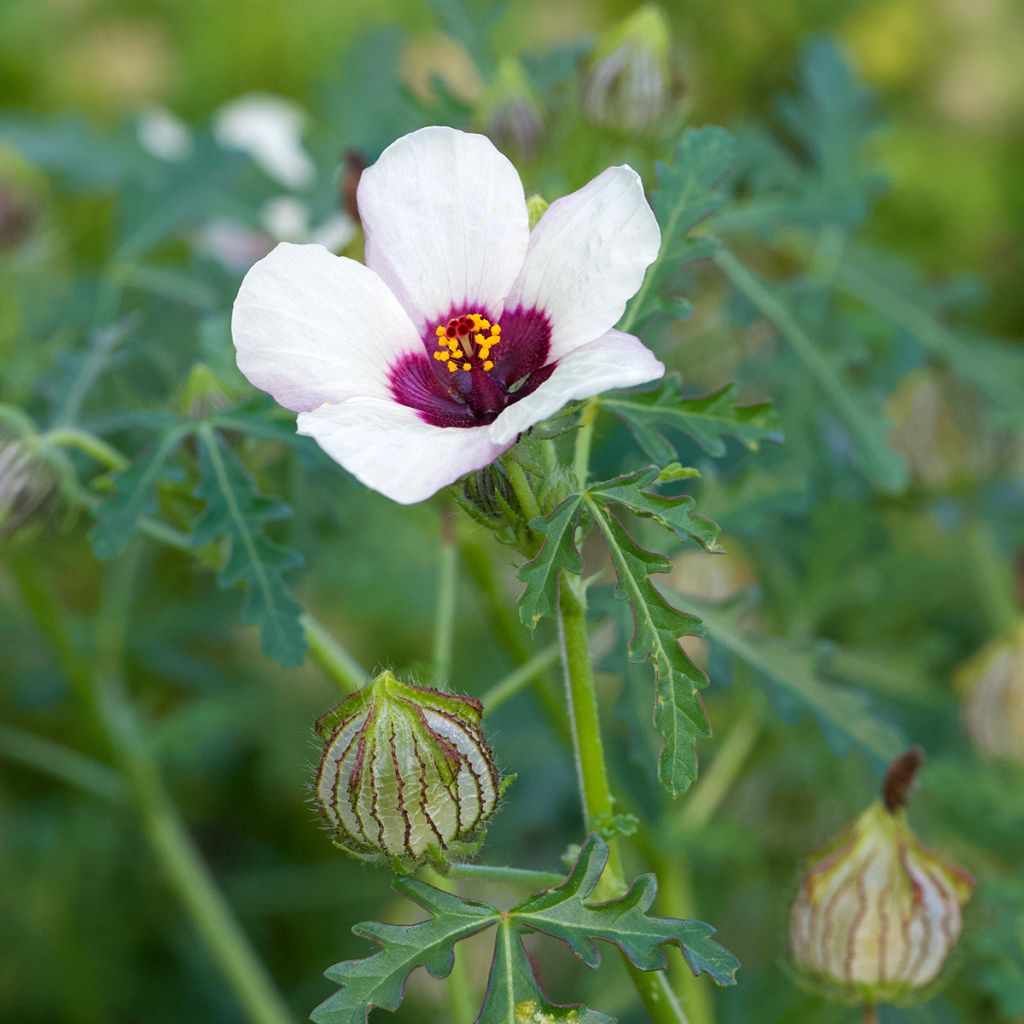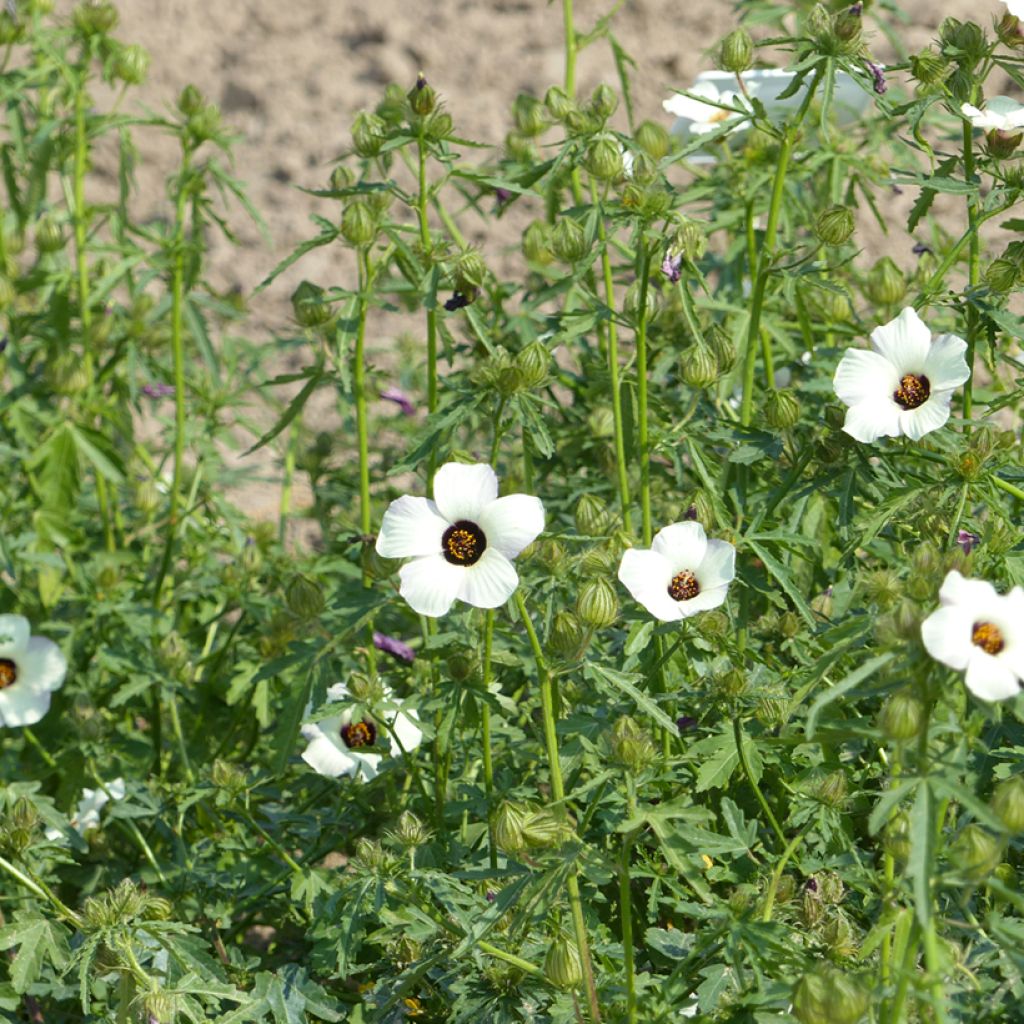

Hibiscus trionum seeds - Flower-of-an-hour


Hibiscus trionum seeds - Flower-of-an-hour


Hibiscus trionum seeds - Flower-of-an-hour


Hibiscus trionum seeds - Flower-of-an-hour


Hibiscus trionum seeds - Flower-of-an-hour


Hibiscus trionum seeds - Flower-of-an-hour


Hibiscus trionum seeds - Flower-of-an-hour
Hibiscus trionum seeds - Flower-of-an-hour
Hibiscus trionum
Bladder Hibiscus, Flower-of-an-hour, Venice Mallow
Special offer!
Receive a €20 voucher for any order over €90 (excluding delivery costs, credit notes, and plastic-free options)!
1- Add your favorite plants to your cart.
2- Once you have reached €90, confirm your order (you can even choose the delivery date!).
3- As soon as your order is shipped, you will receive an email containing your voucher code, valid for 3 months (90 days).
Your voucher is unique and can only be used once, for any order with a minimum value of €20, excluding delivery costs.
Can be combined with other current offers, non-divisible and non-refundable.
Home or relay delivery (depending on size and destination)
Schedule delivery date,
and select date in basket
This plant carries a 6 months recovery warranty
More information
We guarantee the quality of our plants for a full growing cycle, and will replace at our expense any plant that fails to recover under normal climatic and planting conditions.
Would this plant suit my garden?
Set up your Plantfit profile →
Description
Hibiscus trionum, known as African Rose Mallow or Flower of an Hour, is a little-known ornamental plant, most often grown as an annual. Each flower lasts only one day, but the plant produces continuous flowering throughout the summer, from June to the first frosts. In flower beds, borders, or on a sunny terrace, its bicolour flowers possess a gently exotic charm.
Hibiscus trionum belongs to the Malvaceae family and originates from eastern Mediterranean regions, although this species has spread to subtropical and temperate climates across southern Europe and America. In Australia, it is considered invasive due to its ability to self-seed easily. This annual herbaceous plant, sometimes biennial, reaches between 50 to 80 cm in height. It forms a rounded clump composed of stems branching from the base.
The foliage of Hibiscus trionum is distinctive. The alternate, dark green leaves are deeply lobed, with 3 to 5 main lobes that further divide into smaller lobes. These lobes have toothed or slightly crinkled edges. The first leaves at the base of the plant are more rounded, while the upper leaves are longer and more deeply lobed. Each leaf can reach between 2 and 8 cm in length. This foliage gives the plant a light and airy texture. The leaves and stems are slightly hairy, quite soft to the touch.
The flowers of Hibiscus trionum measure approximately 6 to 7 cm in diameter. They are characterised by pale yellow to cream-white petals, contrasting with an almost black, dark purple throat. Each ephemeral flower lasts only one day and often opens under direct sunlight. The plant's fruits are lantern-shaped capsules containing kidney-shaped seeds, capable of self-seeding spontaneously. This prolific plant can produce successive blooms throughout the summer, provided it receives warmth and light.
Hibiscus trionum is used in sunny flower beds, flowering borders, or in containers on a terrace. Its dense habit and generous flowering make it an excellent background plant or the star of a summer bed. To create a harmonious composition, pair it with Creamy Yellow Shrubby Sage 'Melen', Aster cordifolius 'Little Carlow', and Perovskia 'Lacey Blue' for example. This combination provides a prolonged and delicately coloured flowering display.
Hibiscus trionum seeds - Flower-of-an-hour in pictures




Flowering
Foliage
Plant habit
Botanical data
Hibiscus
trionum
malvaceae
Bladder Hibiscus, Flower-of-an-hour, Venice Mallow
Hibiscus africanus, Hibiscus hispidus, Hibiscus ternatus, Hibiscus trionum var. ternatus
Mediterranean
Planting and care
Sow Hibiscus trionum spring, when temperatures exceed 15°C. Sow the seeds under cover in March-April or directly outdoors from May. Plant the seeds at a depth of 1 cm in a light and well-drained substrate, then water lightly. Germination takes about 2 to 3 weeks. When the young plants reach 5 to 10 cm in height, transplant them outdoors, spacing them 30 cm apart.
Cultivation:
To promote abundant flowering, place Hibiscus trionum in full sun, in fertile, light, well-drained soil. Water regularly, without excess, and ensure that the soil remains moist, especially in hot weather. Although the plant tolerates dry periods, regular watering will extend the flowering period. Remove faded flowers to encourage the formation of new buds.
Sowing period
Intended location
Planting & care advice
This item has not been reviewed yet - be the first to leave a review about it.
Haven't found what you were looking for?
Hardiness is the lowest winter temperature a plant can endure without suffering serious damage or even dying. However, hardiness is affected by location (a sheltered area, such as a patio), protection (winter cover) and soil type (hardiness is improved by well-drained soil).

Photo Sharing Terms & Conditions
In order to encourage gardeners to interact and share their experiences, Promesse de fleurs offers various media enabling content to be uploaded onto its Site - in particular via the ‘Photo sharing’ module.
The User agrees to refrain from:
- Posting any content that is illegal, prejudicial, insulting, racist, inciteful to hatred, revisionist, contrary to public decency, that infringes on privacy or on the privacy rights of third parties, in particular the publicity rights of persons and goods, intellectual property rights, or the right to privacy.
- Submitting content on behalf of a third party;
- Impersonate the identity of a third party and/or publish any personal information about a third party;
In general, the User undertakes to refrain from any unethical behaviour.
All Content (in particular text, comments, files, images, photos, videos, creative works, etc.), which may be subject to property or intellectual property rights, image or other private rights, shall remain the property of the User, subject to the limited rights granted by the terms of the licence granted by Promesse de fleurs as stated below. Users are at liberty to publish or not to publish such Content on the Site, notably via the ‘Photo Sharing’ facility, and accept that this Content shall be made public and freely accessible, notably on the Internet.
Users further acknowledge, undertake to have ,and guarantee that they hold all necessary rights and permissions to publish such material on the Site, in particular with regard to the legislation in force pertaining to any privacy, property, intellectual property, image, or contractual rights, or rights of any other nature. By publishing such Content on the Site, Users acknowledge accepting full liability as publishers of the Content within the meaning of the law, and grant Promesse de fleurs, free of charge, an inclusive, worldwide licence for the said Content for the entire duration of its publication, including all reproduction, representation, up/downloading, displaying, performing, transmission, and storage rights.
Users also grant permission for their name to be linked to the Content and accept that this link may not always be made available.
By engaging in posting material, Users consent to their Content becoming automatically accessible on the Internet, in particular on other sites and/or blogs and/or web pages of the Promesse de fleurs site, including in particular social pages and the Promesse de fleurs catalogue.
Users may secure the removal of entrusted content free of charge by issuing a simple request via our contact form.
The flowering period indicated on our website applies to countries and regions located in USDA zone 8 (France, the United Kingdom, Ireland, the Netherlands, etc.)
It will vary according to where you live:
- In zones 9 to 10 (Italy, Spain, Greece, etc.), flowering will occur about 2 to 4 weeks earlier.
- In zones 6 to 7 (Germany, Poland, Slovenia, and lower mountainous regions), flowering will be delayed by 2 to 3 weeks.
- In zone 5 (Central Europe, Scandinavia), blooming will be delayed by 3 to 5 weeks.
In temperate climates, pruning of spring-flowering shrubs (forsythia, spireas, etc.) should be done just after flowering.
Pruning of summer-flowering shrubs (Indian Lilac, Perovskia, etc.) can be done in winter or spring.
In cold regions as well as with frost-sensitive plants, avoid pruning too early when severe frosts may still occur.
The planting period indicated on our website applies to countries and regions located in USDA zone 8 (France, United Kingdom, Ireland, Netherlands).
It will vary according to where you live:
- In Mediterranean zones (Marseille, Madrid, Milan, etc.), autumn and winter are the best planting periods.
- In continental zones (Strasbourg, Munich, Vienna, etc.), delay planting by 2 to 3 weeks in spring and bring it forward by 2 to 4 weeks in autumn.
- In mountainous regions (the Alps, Pyrenees, Carpathians, etc.), it is best to plant in late spring (May-June) or late summer (August-September).
The harvesting period indicated on our website applies to countries and regions in USDA zone 8 (France, England, Ireland, the Netherlands).
In colder areas (Scandinavia, Poland, Austria...) fruit and vegetable harvests are likely to be delayed by 3-4 weeks.
In warmer areas (Italy, Spain, Greece, etc.), harvesting will probably take place earlier, depending on weather conditions.
The sowing periods indicated on our website apply to countries and regions within USDA Zone 8 (France, UK, Ireland, Netherlands).
In colder areas (Scandinavia, Poland, Austria...), delay any outdoor sowing by 3-4 weeks, or sow under glass.
In warmer climes (Italy, Spain, Greece, etc.), bring outdoor sowing forward by a few weeks.









































